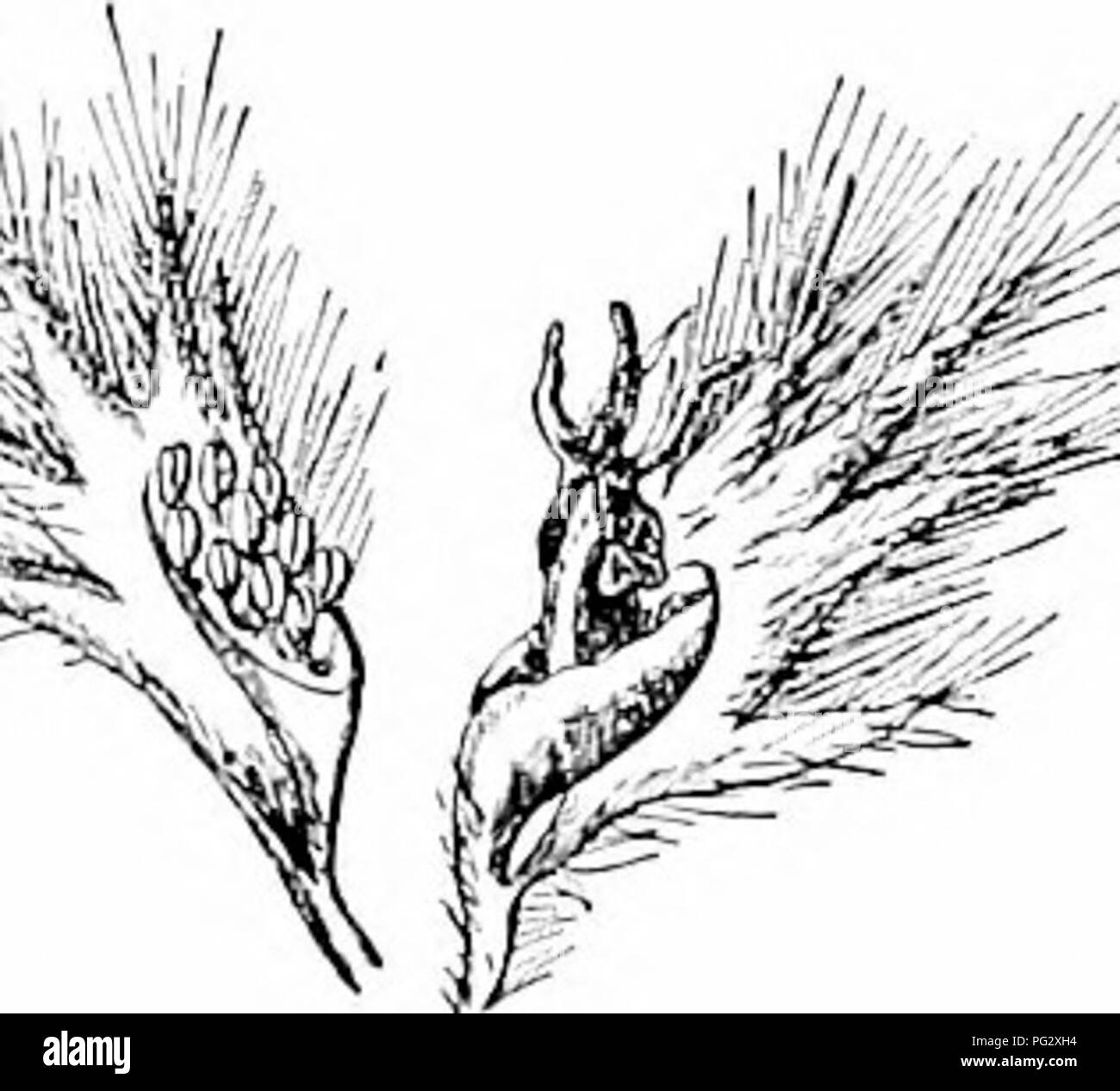. Our native trees and how to identify them; a popular study of their habits and their peculiarities. Trees. ASPEN ASPEN. QUAKING ASP PSpuhis trt'iHuloldcs* fiL-iiiulituh's refers to the flutteriiij^' habit of the leaves. Most widely distributed tree of North America. Prefers a rather moist sandy soil and gravelly hillsides. Small, slender, rarely reach- ing the height of fifty feet, but credited with one hundred feet in northern Arizona at an elevation of S,ooo feet above the sea. Grows rapidly and forms a narrow round-topped head. Roots large, vig- orous and stolonilerous. Bark.—On old trees

Image details
Contributor:
Central Historic Books / Alamy Stock PhotoImage ID:
PG2XH4File size:
7.1 MB (235.3 KB Compressed download)Releases:
Model - no | Property - noDo I need a release?Dimensions:
1661 x 1503 px | 28.1 x 25.5 cm | 11.1 x 10 inches | 150dpiMore information:
This image is a public domain image, which means either that copyright has expired in the image or the copyright holder has waived their copyright. Alamy charges you a fee for access to the high resolution copy of the image.
This image could have imperfections as it’s either historical or reportage.
. Our native trees and how to identify them; a popular study of their habits and their peculiarities. Trees. ASPEN ASPEN. QUAKING ASP PSpuhis trt'iHuloldcs* fiL-iiiulituh's refers to the flutteriiij^' habit of the leaves. Most widely distributed tree of North America. Prefers a rather moist sandy soil and gravelly hillsides. Small, slender, rarely reach- ing the height of fifty feet, but credited with one hundred feet in northern Arizona at an elevation of S, ooo feet above the sea. Grows rapidly and forms a narrow round-topped head. Roots large, vig- orous and stolonilerous. Bark.—On old trees near the base almost black; higher on the trunk and on young stems, pale greenish brown or yellow brown or nearly white, often roughened with horizontal bands or wart-like ex- crescences and marked below the branches with large, dark, lunate scars. Branchlets at first red brown, and shining, turning finally to a light gray, afterward becoming dark gray, for two or three years much roughened by leaf-scars. The sweet inner bark in eaaly spring is used as food by the Indians of the north. IVooii.—Light brown, sapwood nearly white, soft, close-grained, neither strong nor durable. Largely used in the manufacture of paper ; and in the west for flooring and turnery, liurns freely when green. Sp. gr., 0.4032 ; weight of cu. ft., 25.13 lbs. Winter Buds.—Leaf-buds slightly resinous, reddish brown, conical acute, somewhat incurved, one-fourth of an inch long ; narrower than the obtuse flower-buds. Leaves.—Alternate, simple, one and a half to two inches long, ovate or nearly round, slightly cordate or truncate at base, finely serrate with glandular-tipped teeth, acute. Feather-eined, midrib and primary veins conspicuous. They come out of the bud involute, smooth, light green, shining, ciliate on margins, when full grown are thin, dark green, shining above, pale, dull, yellow green beneath. In autiUiin they turn a clear bright yellow. Tremulous. Pet- ioles long, slender, and later